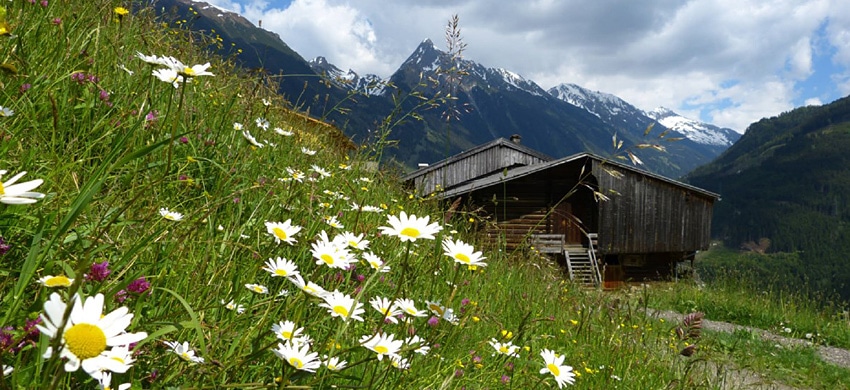

The smallest of the 9 Austrian states, Vorarlberg is also the westernmost. It is inhabited by less than 400,000 inhabitants, and the mountains are its distinguishing feature. With its capital Bregenz, Vorarlberg is closer to Bavaria than to Austria, not only geographically, but also in its dialect, customs and gastronomy.
Tourism is one of the main sources of income for the inhabitants of Vorarlberg, so much so that more than 10% of them work in this industry. In fact, the region is an ideal destination for both summer and winter holidays. During the warm season, tourists can, for example, visit the beautiful Bregenz forest, or Bregenzerwald in German, where they can also take a delicious route to discover the local cheeses. Also worth mentioning are the district of Bludenz and the glamorous resorts of Lech and Zurs, where unforgettable days can be spent between a walk in the mountains and a spa break.
In winter, on the other hand, the absolute star of the region is the Ski Arlberg ski resort, which since the winter of 2013-2014 has been connected to the Warth-Schrocken ski resort, making the entire area one of the largest in Europe, and the largest in Austria, with no less than 550 kilometres of ski-connected slopes. Also worth mentioning is the Silvretta Montafon ski area, with around 150 kilometres of pistes, half of which are over 2,000 metres above sea level, created from the union of two areas: Silvretta Nova and Hochjoch.
Vorarlberg is located at the western end of Austria; it borders Switzerland and Liechtenstein to the west and south, Bavaria to the north and the Austrian region of Tyrol to the east.
Its territory is almost completely mountainous, the highest peak being Piz Buin, near the Swiss border, with an altitude of 3312 metres and wonderful glaciers all around. It is a region with a unique peculiarity: one goes from the summit of Piz Buin to Lake Constance, located at an altitude of only 395 metres, in less than 90 kilometres.
Vorarlberg’s climate is obviously mountainous, with cool summers and heavy snowfall in winter. The small town of Damüls is known as the place where the most snow falls in Europe, with an average of 9.30 metres of snow every year.
Despite its small size, Vorarlberg is an area full of things to see, especially for those who love the mountains, both in summer and winter. Since you can cross it all from south to north and from east to west in just over an hour, it is a perfect destination for a holiday of a few days or a week.
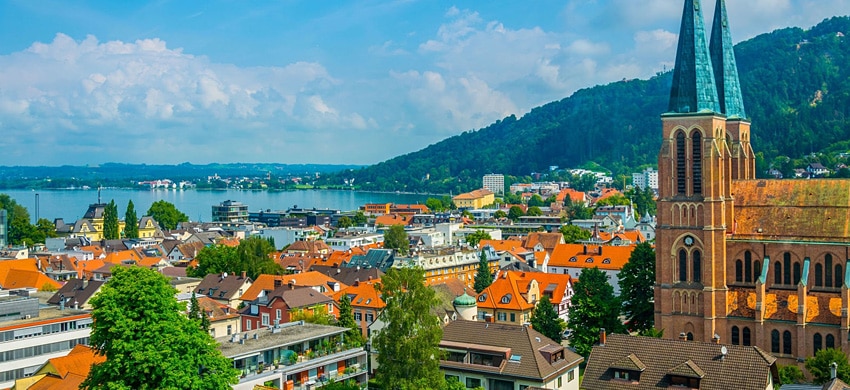
The capital of Vorarlberg, Bregenz is a delightful town that can also be used as a base for visiting the entire region, although it is located at the northern end, overlooking Lake Constance. It is home to the contemporary art museum Kunsthaus Bregenz, or KUB, overlooking the lake, one of Europe’s most important exhibition complexes. Not far away is the Vorarlberg Museum, the museum dedicated to the history of the region, with over 150,000 artefacts on display.
Then spend some time on the lakeside promenade, passing the old post office, the harbour and the Fischersteg pier, dating from 1902. Finally, end your visit to Bregenz by visiting the Oberstadt, the upper town, situated on the hills south of the lake, with beautiful narrow streets and small squares all to be visited strictly on foot.
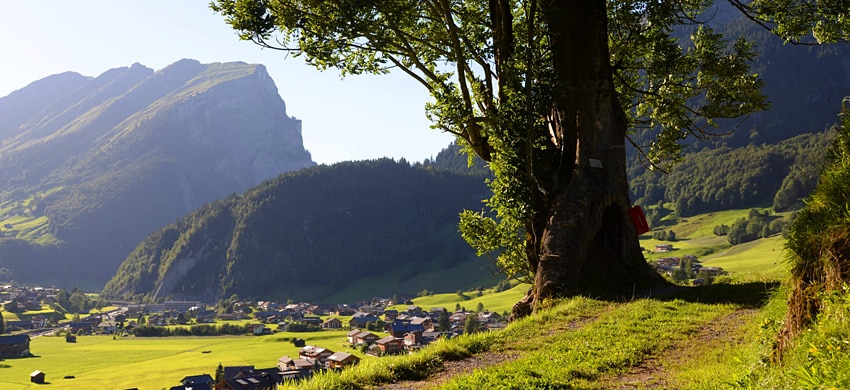
The magnificent Bregenz Forest area, or Bregenzerwald in German, is a place of peace and tranquillity located east of Bregenz. A pre-Alpine landscape dotted with typical wooden houses and farms, with high peaks forming a backdrop to meadows and valleys.
Explore the Bregenzerwald on foot or by bike, or with the Wälderbähnle steam train, which runs between Bezau and Schwarzenberg. The Schubertiade, the festival dedicated to the composer Schubert, is held here every summer and attracts more than 35,000 visitors with a packed calendar of events.
Also, don’t miss the Kasestrasse, the cheese road: a taste itinerary through farms and dairies where you can stop and taste the region’s gastronomic specialities.
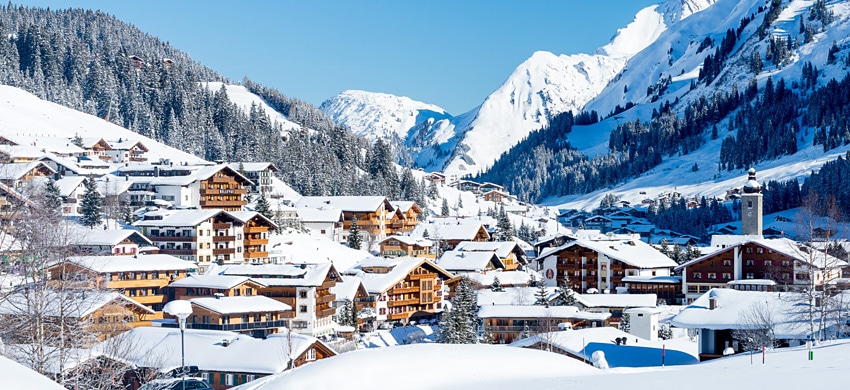
Lech am Arlberg is a small village in Vorarlberg that has gained such fame over the years that it has become a luxury destination frequented by the international jet-set. Situated at an altitude of 1450 metres, Lech is a typical Alpine village dating back to the 14th century, where today gourmet restaurants and 5-star hotels can be found.
Visit Lech in summer or winter for mountain hikes or ski tours. Surrounded by high Alpine peaks, from Lech you can reach Lake Monzabonsee, in whose surroundings you will find oceanic fossils dating back 200 million years, when water completely covered this area.
After a hard day outdoors, relax in a wellness centre, spa or yoga class and visit Skyspace-Lech, a unique installation by American artist James Turrell.
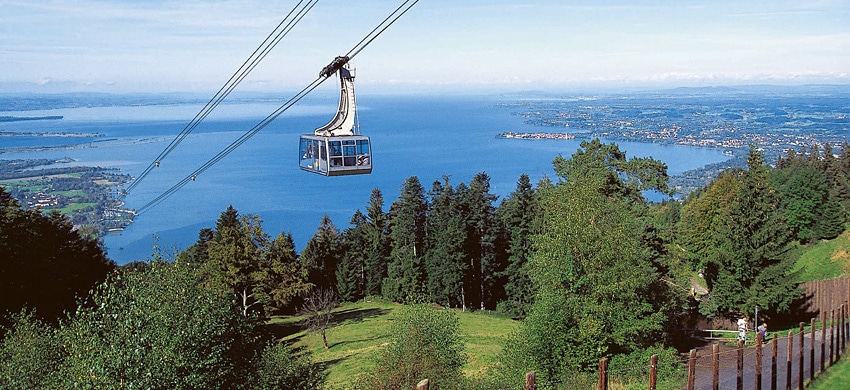
A short distance from Bregenz is the Pfander mountain, with an altitude of 1064 metres. You can reach its summit by a two-hour walk from Bregenz via Hintermoos, or by a six-minute ride on the modern Pfänderbahn cable car.
From the summit of the Pfänder you can admire an extraordinary panorama of Lake Constance and the German and Swiss towns along its shores, and on a clear day you can see the peaks of more than 240 mountains!
On top of the mountain there is also a nature park, where you can take a half-hour walk in a protected environment, and see flocks of Alpine goats and demonstrations of predatory birds up close.
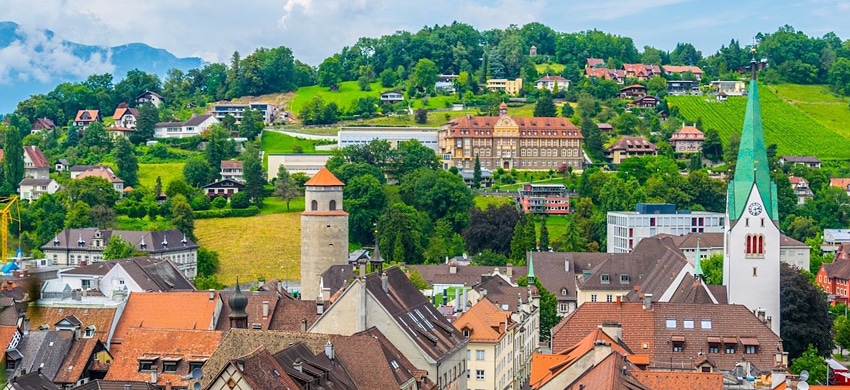
Feldkirch is the former capital of Vorarlberg and can claim the title of Austria’s westernmost city. It is located about 35 kilometres south of Bregenz; its historic centre is very well preserved and very pleasant to walk around.
But the main attraction of Feldkirch is Schattenburg Castle, which dominates the town from a surrounding hill. Reach it by following the steep footpath, and you will be rewarded with a splendid view of Feldkirch and the surrounding nature. The castle dates back to the 12th century, and it is possible to visit its beautiful inner courtyard and the adjacent museum, which displays a collection of weapons and a Romanesque crucifix dating back to 1250. It is also possible to take part in a guided tour of the castle, available in German or English.
In the following map you can see the location of the main places of interest mentioned in this article